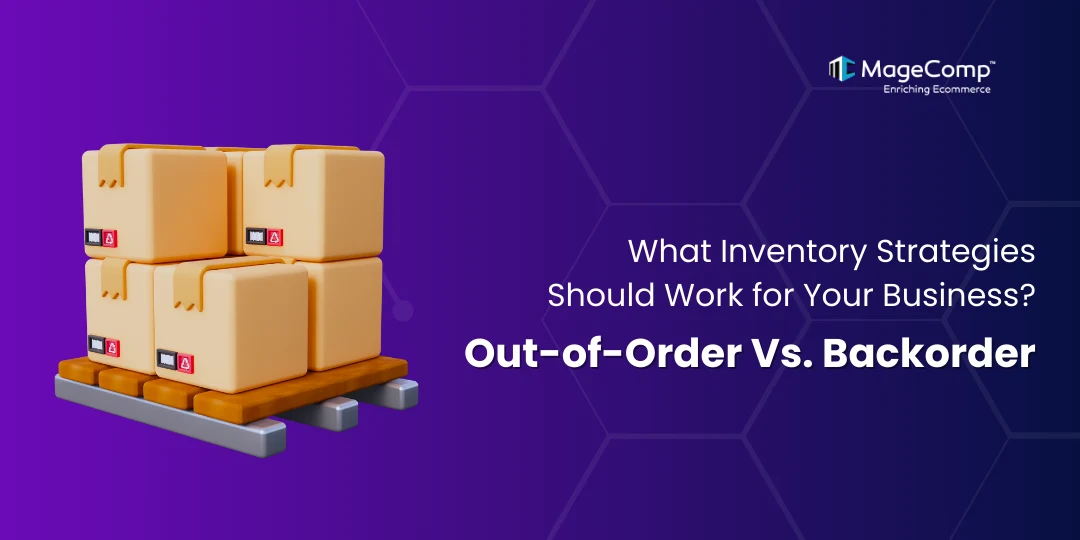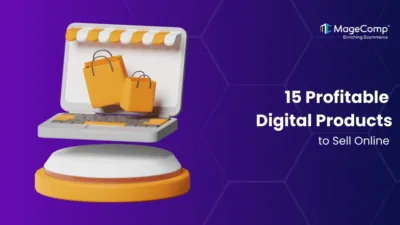Inventory management is a daunting task for every business. The significance of inventory management to any business cannot be overstated; doing so provides seamless flow and operational capacity, sets the stage for happy customers, and creates profitable sales.
Regardless of the industry, stock-outs and a disrupted supply chain will present challenges in managing inventory. In fact, two terms that you will see in inventory management are similar in meaning, and there are differences in meaning and solutions as the terms describe the product(s) that are temporarily unavailable; these terms are out-of-order or out-of-stock and backorder.
This article will focus on Out-of-Order versus Backorder, discussing the definitions, how they occur, and the consequences, briefly adding how a business can limit risk in each area and minimize disruption to consumer confidence.
What Does Out-of-Stock Mean?
“Out of stock” means that a product is currently unavailable for purchase because all units have been sold or are otherwise not accessible. All units have already been sold, or the product is otherwise unavailable. This is usually due to excessive demand, supply chain issues, production delays, or inaccurate inventory tracking.
If an item is out of stock, the consumer must either wait for the product to be restocked or search for an alternative. Many businesses, especially in e-commerce, use out-of-stock notifications or pre-orders to help manage consumer expectations.
Out-of-stock products in both eCommerce and in-person can have a negative impact on sales and consumer experience, meaning inventory management is crucial for businesses that need to protect product availability and reduce their loss of sales.
What Does Backorder Mean?
A backorder happens when a product is temporarily out of stock but remains available for sale, and the customer will be notified when the product is restocked and available for shipment.
Backordering allows clients to place orders when an item might not be in stock at that moment, but the vendor expects to have it available for shipment in a time frame that is acceptable to the customer. Backorders allow companies to process additional sales without having to send customers to a competitor for stock. While backorders expand sales, they also increase the chance of shipping complications.
While the vendor has estimated the ship date and has promised to communicate any changes, too many backorders can lead to shipping delays, abolishing anticipated orders, building frustration, and cancellations.
Retailers and suppliers expend valuable resources projecting restocking dates and communicating that information to the customer. It is important to understand that backorders are often a good sign, indicating an increased demand. However, they can expose supply chain inefficiencies.
Effective management of inventory and communication with clients can keep backorders manageable, which only serves to annoy, delay, and confuse customers. It is important to balance the extra orders and feedback to minimize outages to the customer.
| Difference | Back Order | Out of Stock | Pre-Order |
| Definition | A backorder occurs when a product is temporarily unavailable but will be restocked soon, and customers can still place orders for future fulfillment. | An item is marked as out of stock when it is unavailable for purchase, and no immediate restocking plans exist. Customers cannot place orders until it is replenished. | A pre-order allows customers to purchase a product before it is officially released or restocked, ensuring they get it as soon as it becomes available. |
| Occurrence | This happens when demand exceeds available inventory, but the retailer or supplier has confirmed restocking plans within a specific timeframe. | It occurs when inventory runs out completely, and there is no immediate confirmation of when or if the product will be restocked. | It happens before the official product launch, during promotions, or when manufacturers want to gauge demand before production. |
| Customer Impact | Customers experience delays in receiving the product but have the assurance that it will be shipped once back in stock. | Customers are unable to purchase the item, which may lead them to look for alternatives from competitors or abandon their purchase. | Customers are aware of the wait time before making a purchase, allowing them to secure the product early and avoid stock shortages. |
| Revenue Impact | It helps maintain sales even when inventory is low, preventing lost revenue and allowing businesses to fulfill orders once stock is replenished. | This leads to potential revenue loss as customers may turn to competitors or lose interest due to unavailability. | Generates early revenue before production or restocking, helping businesses plan inventory and marketing strategies more effectively. |
| Management Tips | Optimize inventory forecasting, work closely with suppliers, and set clear expectations with customers regarding expected fulfillment times. | Monitor stock levels regularly, improve supply chain efficiency, and communicate restocking timelines if possible to retain customer interest. | Use pre-orders to analyze demand, manage supply chain logistics efficiently, and ensure timely product launches to meet customer expectations. |
| Customer Satisfaction | Customers may tolerate short wait times if expectations are managed well, but long delays can lead to frustration. | Customers may be dissatisfied due to uncertainty about availability, leading to frustration and loss of trust in the brand. | Customers generally have positive experiences if the estimated delivery date is accurate and communication about availability is clear. |
| Best Practices | Provide real-time inventory updates, offer estimated delivery dates, and give customers the option to modify or cancel their orders if delays occur. | Keep customers informed about restocking plans, offer alternatives or back-in-stock notifications, and prevent frequent stockouts by improving supply chain efficiency. | Set realistic delivery timelines, be transparent about availability, and incentivize pre-orders with exclusive discounts or bonuses to encourage early purchases. |
Why do Products go Out-of-Stock Frequently?
Multiple factors are responsible for making a product go out of stock, along with that, multiple factors go into creating the product, stocking it, conducting marketing campaigns, and ultimately, the purchasing step. However, some common reasons can make products go out of stock, like;
- High product demand
- Slow shipping issues or disruptions in the supply chain
- Issues in inventory management
- Shortage of staff or delays in the process
While it’s your job to figure all of this out and ultimately get your product into stock, it’s important to remember that your customer doesn’t know any of this. They are simply interested in the product itself and how to buy it. This is why it’s important to communicate about gaps in availability and delays as soon as you can.
How long do backorders take?
This is a very common question from customers and is something you will need to prepare to answer. If your business offers backorder, you should provide expectations in your order placement and your shipment policies on your website. How long backorders take usually depends on a variety of factors, including:
- The production time from your supplier,
- The demand for your product,
- The length of the supply chain
- The shipping arrangements.
As a basic guide, back ordering could typically be weeks to 2-3 months. Having realistic expectations goes a long way to customer satisfaction during the fulfillment of the order through back ordering, so try to communicate as clearly as you can.
What are the Best Practices for Backordering?
Often, it’s a good idea to avoid backorder shipments because they still create delays and inconvenience customers.
However, instead of designating items as “out-of-stock,” implementing a backorder system may allow your business to keep customers interested in your product and deter customers from considering a competitor’s offer.
Regardless, using a backorder strategy will require the organization to set the proper expectations with customers. All of the following can help you implement a backorder strategy with a pleasant customer service experience:
- Keep a solid inventory management system in place to deter backorders.
- Use historical data to make reasonable predictions about inventory needs.
- Use available technology for pre-ordering and handling backorders.
- Keep a focus on popular items to avoid backorders for high-demand items.
- Keep customers informed of when they can expect items.
- Set automated alerts when inventory is getting low.
- Improve your bin locator and supplier relationships.
- Provide consumers with estimated availability on restock dates on unavailable items.
- Offer good alternatives until stock is available.
When to Stop Taking Backordering?
The intention of not accepting additional backorders is not to turn away unnecessary customers but to be as clear as possible. You should no longer accept backorders in the following cases:
- When you have unclear timelines for restocking.
- If you are dealing with supply chain issues.
- If you are having issues fulfilling existing orders and/or managing orders in an orderly way.
When you don’t want to take additional backorders due to demand or some other constraint, it can send a message to your customers that you are working hard to not only address problems but also to complete existing orders.
Benefits and Drawbacks of Backordering vs. Pre-ordering vs. Out-of-stock
- Advantages
Overall, again, pre-orders and backorders are valuable because they allow you to accept orders despite temporarily limited availability.
Backorders ward customers off potential competitors and provide you with consistent cash flow, which can be the difference in running a successful long-term business financially. The biggest benefit of marking something as “out of stock” is the signal of high demand, which can create customer loyalty.
Honesty and clarity are the other reasons to mark an item as “out of stock” to keep from disappointing customers. This declaration will ensure that your business does not accidentally overpromise.
- Drawbacks
Managing backorders and pre-orders can often be challenging and cause additional frustration and/or dissatisfaction for the customer if the delay is unexpected or if you are unable to fulfill the order at all.
It is important to think through your logistics and available space to make the most realistic timeline for your customers. But saying an item is “out of stock” comes with downsides, too. Items that are labeled OUT OF STOCK can usually lead to a loss of revenue quickly, as well as loss of customer loyalty, and in some cases, can damage your reputation.
A counter-strategy to simply labeling an item out of stock is using out-of-stock notifications that allow consumers to subscribe for updates regarding the product’s availability.
Key Considerations for Inventory Management
Your stock inventory doesn’t just have to be streamlined and organized for the sake of efficiency; it is really the most effective way to ensure customers are satisfied—and willing to return.
It is worth repeating; it’s far easier to keep a customer and a good relationship than to attempt to rebuild trust once there’s a concern.
Here are three more important factors to consider when managing your inventory:
- Use Real Data to Make Decisions about Inventory
One of the best ways to predict inventory needs accurately is to use your existing real-time analytics to predict demand. Remember that current trends and the time of year will also impact your inventory flow.
- Deliver a Good Customer Experience
Your customers’ needs and wants should determine how you manage your inventory. Keeping the customer at the forefront of your management strategies ensures that you are not only getting that product to them on time but that you’re providing a quality good experience throughout the relationship you’re building together. Keep them up to date on backorder, preorder status, expected restocking date, etc.
- Utilize Digital Tools for Inventory Management
Strive for efficiency in managing your inventory system by using digital technology, including apps and plug-ins for common administrative tasks. Examples of what digital inventory features will allow you to do are:
- Track inventory levels
- Notify you of out-of-stock items
- Show you real-time information about your supply chain
- Accept all manner of products as a pre-order / backorder
- Set discount rules for pre-order / back-ordered products
- Create customized buttons and notifications for pre-order/back-ordered items
- Show release or back-in-stock dates for the products
- Send notices of product release
Final Thoughts
Backorder, out-of-stock, and pre-order are all reasonable and valid inventory strategies. The overall strength or weakness of one strategy over another will depend heavily on how they make sense with your scenario.
If your supply chain is trustworthy, then you may be able to take backorder inventory as a way to keep customer loyalty. If there is still uncertainty, as in saying we “will not be accepting backorders” and simply marking it “out-of-stock,” it can provide more transparency.
Strive for a balance by analyzing demand predictability, supplier reliability, and customer satisfaction. It only requires that you adjust your inventory stock strategy to whatever is the best fit for your business.





